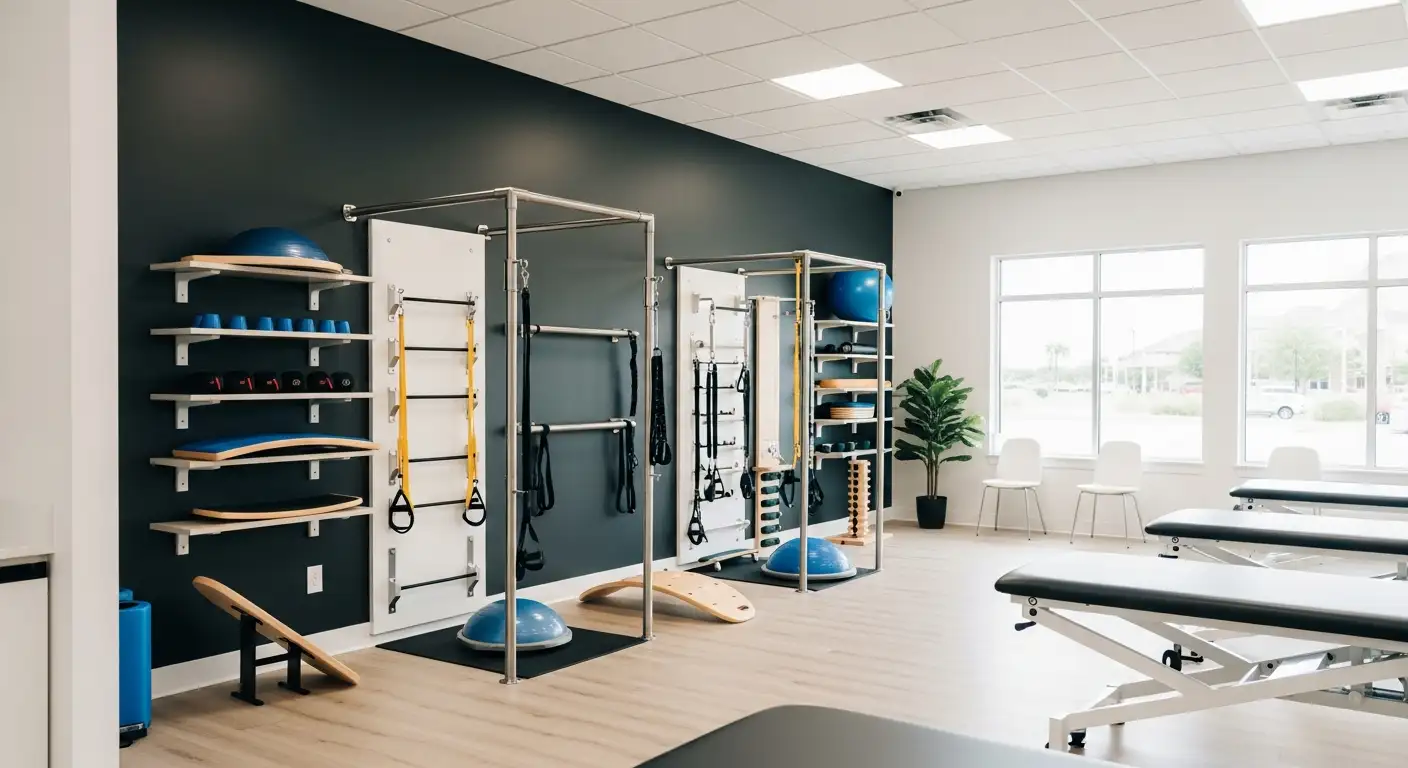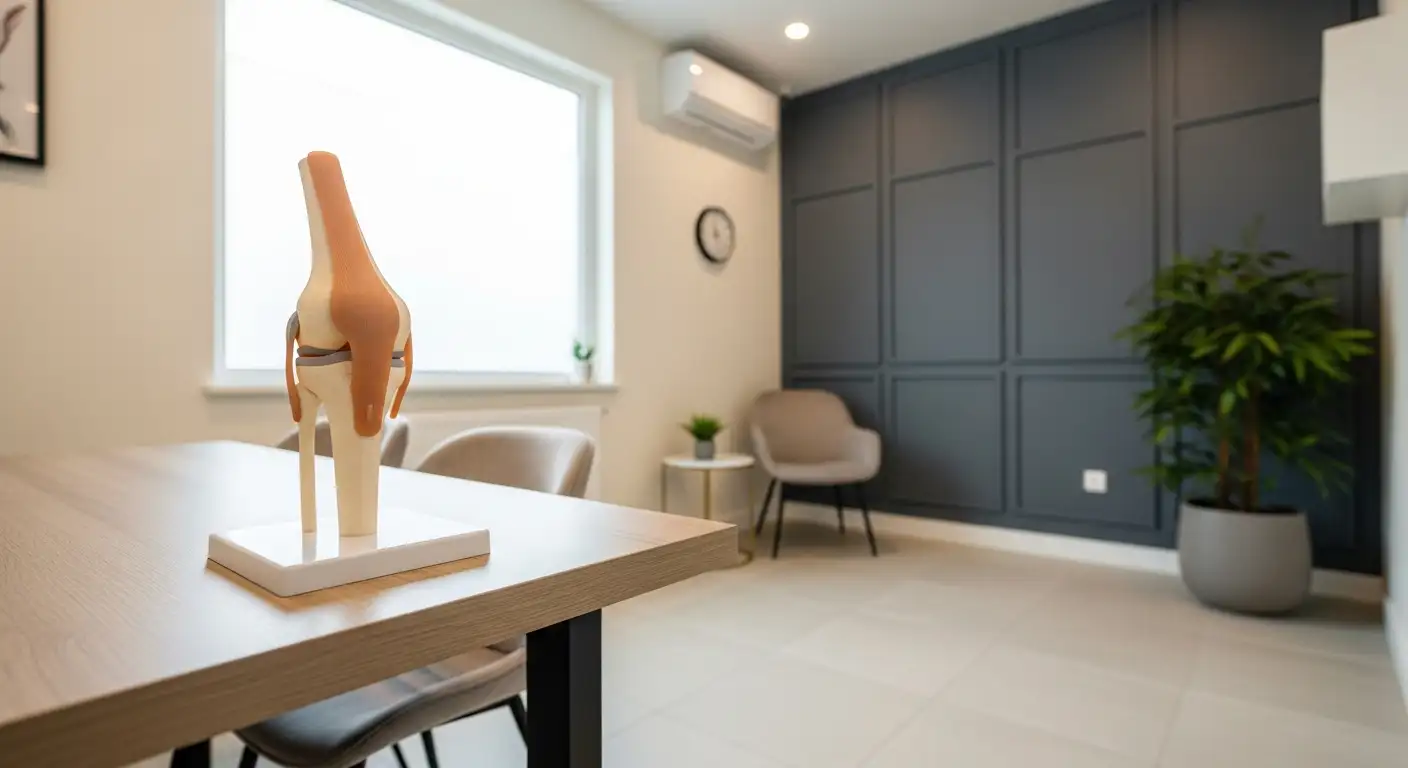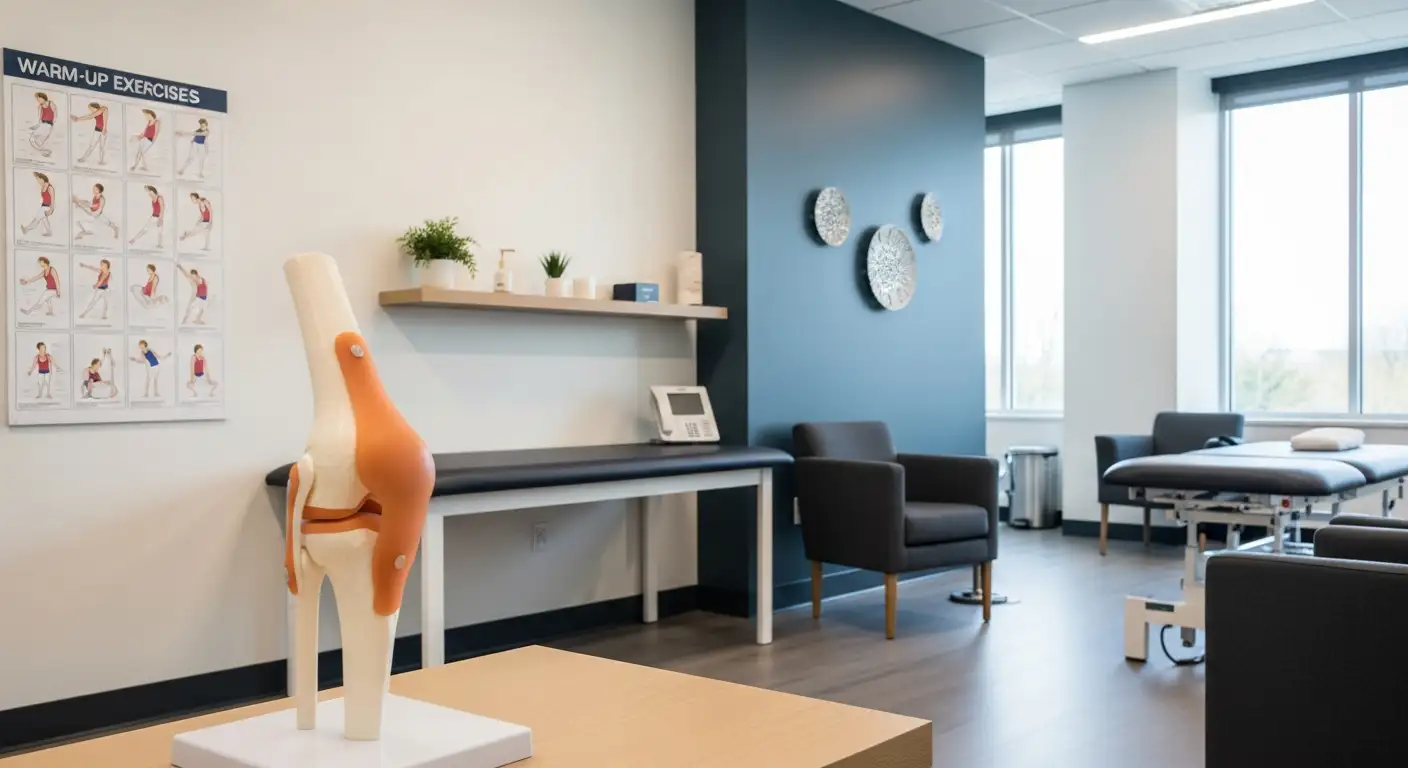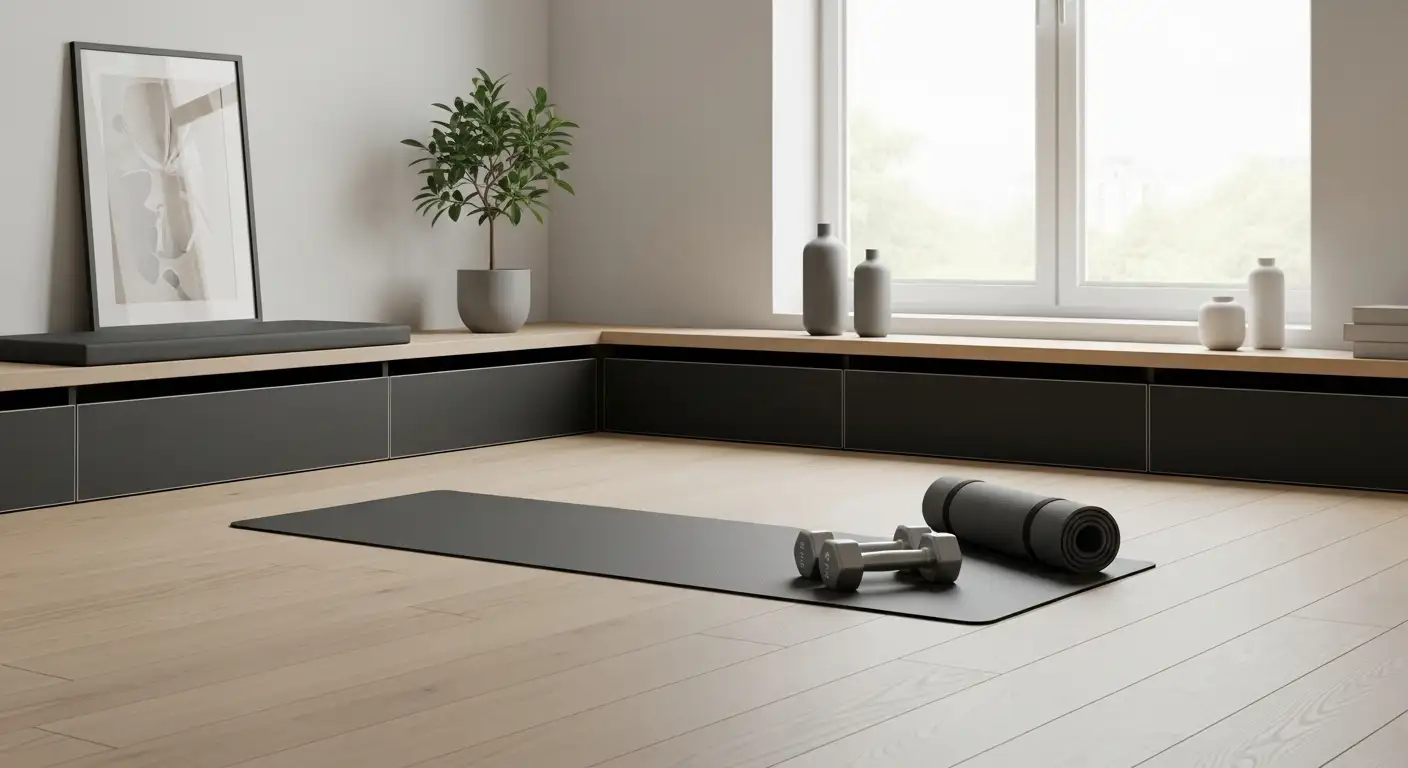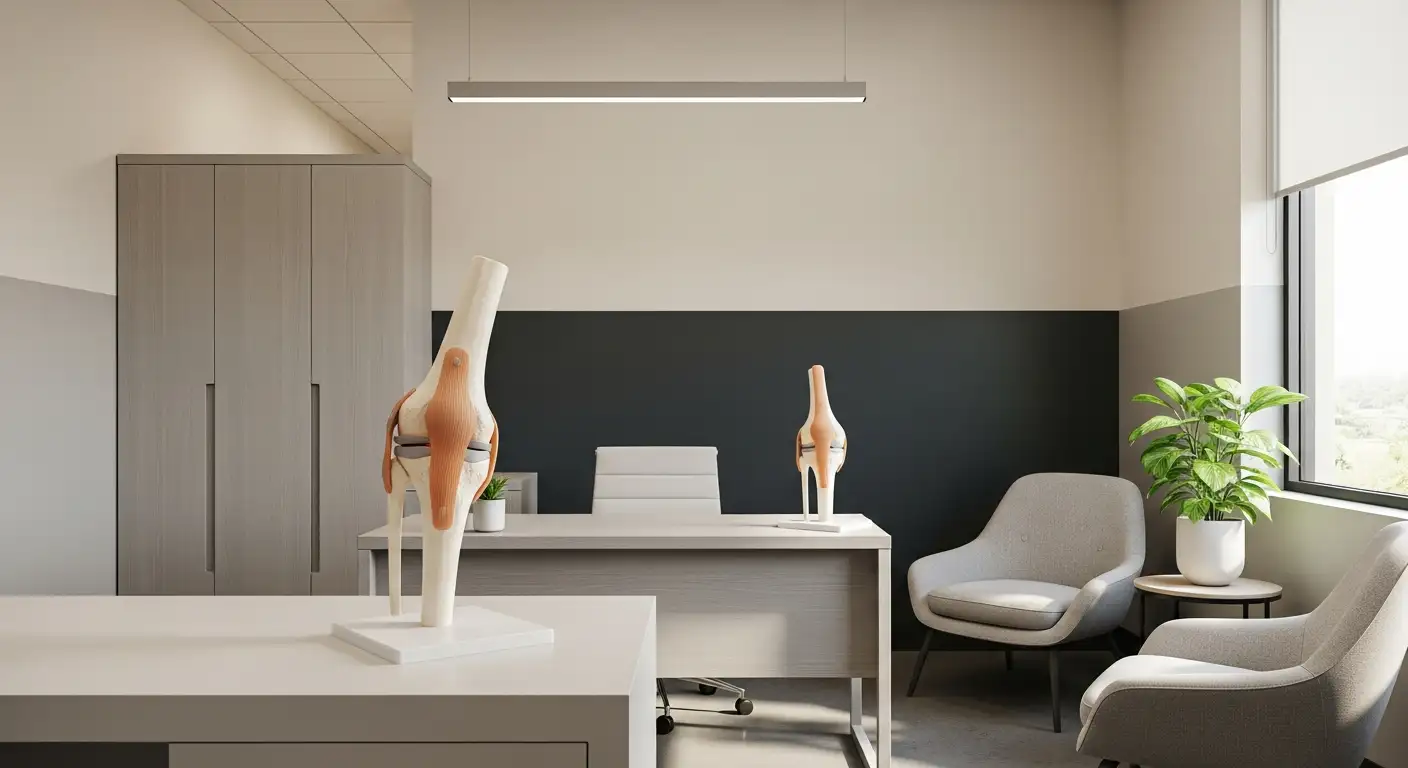Understanding Knee Pain When Squatting
When it comes to physical activities like squatting, knee pain is a common issue experienced by many individuals. It is usually the result of various factors, which can range from specific injuries to general overuse of the knee joint. To better manage and prevent knee pain during squats, it is crucial to understand its common causes and how squatting influences this condition.

Common Causes of Knee Pain
Knee pain, particularly at the back of the knee when squatting, can arise from a myriad of issues. According to Medical News Today, these can include:
- Baker's cyst: A fluid-filled sac that forms behind the knee, causing discomfort and tightness.
- Muscle strain: Overstretching or tearing of muscle fibers, typically due to overuse or injury.
- Ligament injury: Damage to the ligaments that connect your thigh bone to your lower leg bones.
- Patellar tendinopathy: Also known as "jumper's knee", this is an injury to the tendon connecting the kneecap to the shinbone.
- Hamstring tendonitis: Inflammation of the tendons in the hamstring, located at the back of the thigh.
- Popliteal tendon injury: Damage to the tendon of the popliteus, a small muscle located at the back of the knee.
- Meniscus tear: Damage to the cartilage that cushions the knee joint.
- Knee bursitis: Inflammation of the small fluid-filled sacs (bursa) around the knee.
Role of Squatting in Knee Pain
Squatting, particularly with poor technique or excessive weights, can exacerbate knee pain. Squatting can put pressure on the knee joint, leading to discomfort or pain behind the knee in some individuals. Incorrect positioning of the hips, knees, or ankles can overload the knee joint, causing repetitive friction and wear and tear.
Furthermore, weak muscles, such as the gluteal muscles, can contribute to knee pain when squatting. The glutes play a role in supporting the knee joint and ensuring equal distribution of forces. Weak glutes can lead to improper knee tracking and overload, resulting in knee pain [2].
Understanding these common causes and the role of squatting in knee pain can provide helpful insights into managing and preventing discomfort during this exercise. With the right approach and care, individuals can continue to benefit from squats without experiencing back of knee pain.
Identifying Specific Knee Pain Conditions
While back of knee pain when squatting can occur due to a variety of factors, certain conditions specifically affect this area. These include Baker's cyst, hamstring tendonitis, and patellar tendinopathy.
Baker's Cyst and Knee Pain
A Baker's cyst is a fluid-filled swelling that forms at the back of the knee. This condition occurs when the knee joint produces excessive synovial fluid, often due to issues like arthritis or cartilage tears. As a result, individuals may experience swelling and pain at the back of the knee, especially when bending or squatting Medical News Today, Hinge Health.
Hamstring Tendonitis
Hamstring tendonitis is another condition that can contribute to back of knee pain while squatting. This condition involves inflammation of the hamstring tendons, which can cause pain and discomfort at the back of the knee. It's important to note that hamstring tendonitis may arise from various causes, including overuse, injury, or strain during activities like squatting.
Patellar Tendinopathy
Patellar tendinopathy, also known as jumper's knee, is a condition that primarily affects athletes who perform frequent jumping or squatting activities. This condition involves inflammation of the patellar tendon, which connects the kneecap to the shinbone. As a result, individuals may experience pain at the front of the knee, which can radiate to the back of the knee during activities like squatting.
It's also worth noting that the popliteus muscle, a small muscle that stabilizes the knee, can contribute to back of knee pain when squatting. Weakness or dysfunction in this muscle can lead to pain in the knee, particularly during squatting movements Hinge Health.
Understanding these specific conditions can help in targeting the root cause of knee pain when squatting. However, it's critical to consult with a healthcare professional for a comprehensive diagnosis and an effective treatment plan.
Diagnosing Knee Pain When Squatting
When experiencing discomfort related to squatting, such as back of knee pain when squatting, accurately diagnosing the issue is a crucial step toward finding a solution. The process of diagnosing this pain involves symptom assessment and professional evaluation.
Symptom Assessment
Pain behind the knee during squats can be due to various reasons such as a Baker's cyst, muscle strain, ligament injury, or patellar tendinopathy. It is crucial to assess the symptoms to understand the underlying cause and develop an appropriate treatment plan.
For instance, if the discomfort is localized in the back of the knee and is associated with swelling, it could indicate a Baker's cyst. If the pain is more generalized and occurs after repeated squatting, it could suggest an overuse injury such as hamstring tendonitis or patellar tendinopathy.
Symptom assessment is crucial for diagnosing the cause of pain behind the knee when squatting, as different conditions like hamstring tendinopathy, popliteus tendonitis, or meniscus injuries have varied symptoms and require different treatment approaches.
Importance of Professional Evaluation
While symptom assessment can provide some insight into the potential cause of knee pain when squatting, it is not a substitute for professional evaluation. Consulting a healthcare provider for proper evaluation and treatment is crucial if one experiences persistent or worsening pain behind the knee when squatting.
A healthcare provider or physical therapist can conduct a comprehensive assessment, including physical examination and imaging studies if necessary, to accurately diagnose the cause of the pain. They can also provide a tailored treatment plan and strategies for pain management.
Therefore, if you encounter persistent or severe back of knee pain when squatting, it is strongly advised to seek professional help. While self-care strategies can help manage minor or occasional discomfort, professional evaluation ensures an accurate diagnosis, appropriate treatment, and prevention of potential complications.
Steps to Manage Knee Pain When Squatting
Effective management of back of knee pain when squatting often involves a combination of conservative treatments and physical therapy exercises. These strategies aim to alleviate pain, restore joint function, and prevent future knee pain incidents when squatting.
Conservative Treatments
Conservative treatments are typically the first line of defense against knee pain. These include resting, icing the area, performing gentle stretches, and taking over-the-counter pain medications. For individuals experiencing persistent pain at the back of the knee when squatting, seeking guidance from a healthcare provider or physical therapist is recommended. They can provide a tailored treatment plan and strategies for pain management.
Treatment for back-of-the-knee pain during squats varies based on the underlying cause and severity. In more severe cases, surgical intervention might be necessary to address issues like meniscus tears [3].
Physical Therapy and Exercises
Physical therapy exercises are crucial for managing knee pain when squatting. Strengthening exercises that target the muscles around the knee can be particularly beneficial. For instance, strengthening exercises for the popliteus muscle, such as terminal knee extensions, can help improve the function and stability of the knee joint.
A physical therapist can guide individuals on appropriate exercises based on their specific condition [3].
Incorporating these strategies into a regular routine can assist individuals in managing their knee pain when squatting, promoting overall knee health and facilitating a return to normal activities. However, it's important to remember that these treatments and exercises should be tailored to the individual's specific condition and carried out under professional guidance.
Preventing Knee Pain When Squatting
When it comes to preventing back of knee pain when squatting, there are two key areas to focus on: proper squatting technique and muscle strengthening. Correct technique can reduce the strain on the knee, while strengthening the muscles around the knee can provide better support and stability during squats.
Importance of Proper Squatting Technique
Squatting puts a lot of stress on the knees and surrounding structures, making it crucial to use proper form and technique to prevent injuries like pain at the back of the knee [3]. Poor technique, particularly with deep squats, can lead to knee pain when squatting. Incorrect positioning of the hips, knees, or ankles can overload the knee joint, causing repetitive friction and wear and tear [2].
Moreover, squatting with weights can further increase the forces through the knee joint and lead to knee pain if not performed correctly. Ensuring proper alignment and distributing the load evenly across the joints can help prevent knee pain when squatting.
Engaging in a proper warm-up routine before squatting can also help reduce the risk of experiencing pain behind the knee. This can include dynamic stretches to improve flexibility and mobility around the knee joint.
Role of Muscle Strengthening
Weak gluteal muscles can contribute to knee pain when squatting. The glutes play a crucial role in supporting the knee joint and ensuring equal distribution of forces. Weak glutes can lead to improper knee tracking and overload, resulting in knee pain [2].
Incorporating strengthening exercises targeting the glutes into your fitness routine can help reduce knee pain when squatting. These exercises not only enhance the strength of the gluteal muscles, but also improve their ability to stabilize the knee joint during squats.
Additionally, strengthening exercises for the popliteus muscle, such as terminal knee extensions, can help address pain behind the knee during a squat. These exercises can help improve the function and stability of the knee joint.
In conclusion, prevention is always better than cure. By focusing on proper squatting technique and strengthening the muscles that support the knee, individuals can reduce their risk of experiencing back of knee pain when squatting.
References
[1]: https://www.medicalnewstoday.com/articles/325246
[2]: https://www.knee-pain-explained.com/knee-pain-when-squatting.html
[3]: https://www.hingehealth.com/resources/articles/knee-pain-when-squatting/
